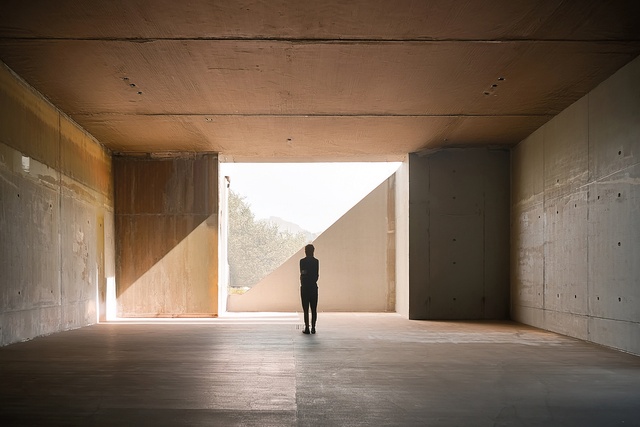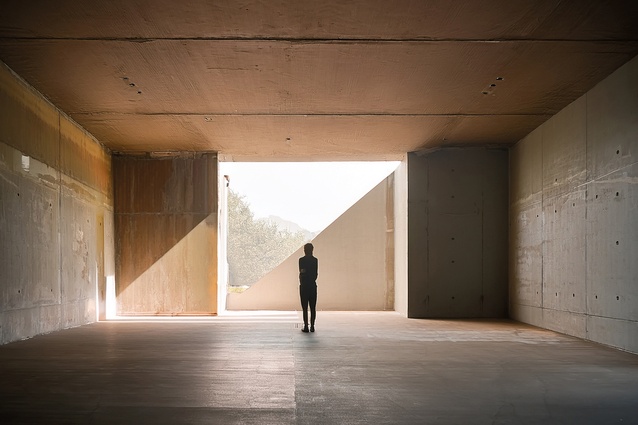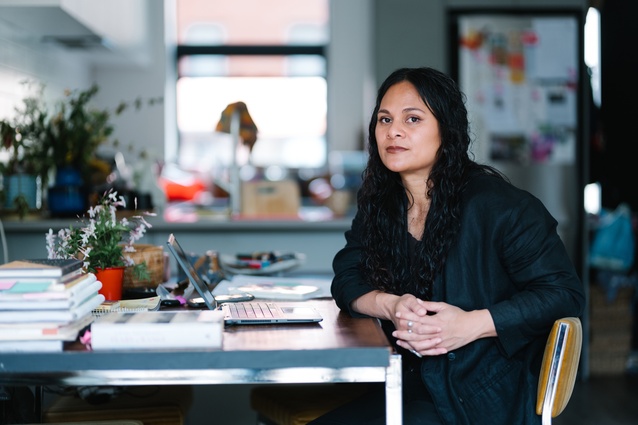The centre cannot hold
Karamia Müller sees architecture as an ongoing negotiation between form and feeling.
Reader, I have always admired things that hold. That endure. I have created a life out of critiquing things that hold. You start with loving them first. Structures that bear weight, that allow for wide open plains beneath canopies. Beams overhead that reassure one, weirdly, of a god. Order. Gravity. The edges of concrete. Clarity. Rock-steady foundations.
And, reflecting here, I consider how socialised we are — in education, and in the professional and personal realms — to value endurance, clarity and coherence. Despite my career being located in critique, I come to this moment and wonder — despite all the things I have supposedly been able to rationalise and pull apart, to look at from other angles — whether or not I have, in the slow drift of middle age, internalised that logic in myself: keep up to date with endless emails, keep hitting send, keep order, obey gravity, follow the edges of concrete.
This has made me, I suspect, an adequately competent person. I can be middling; it’s giving middle, sort of energy. While, in my youth, I entertained career changes — working in human rights law or as a war journalist — I now find myself living a quiet and designed life. From the outside, it may appear (and apologies for this type of vanity, it will be over soon) as though it has all the parts of someone who has agency, choice and the experiences of an academic thinking critically about the world… and perhaps also, quite tidily, all the markers of good planning. But, lately, I have been reflecting on how you can build something beautiful and, if it doesn’t work, then no amount of beauty can rescue it from becoming a hell. Is this the human experience?
Lately, the hell has been quiet. No alarms. No collapse. Just a thickening of time, of space, of the sense that something is not quite mine. My partner keeps me abreast of the latest in US politics… I have my own edited newsfeed that I follow and, between the two sources, my own temporality remains slow and out of body. I hear the beloved outraged at the latest orders to disestablish education and I sense, perhaps, an undercurrent of disbelief that I am not similarly outraged… and the overwhelming feeling I have is: well, aren’t we living in something that is man-made? There is something exhausting about always being caught in a cycle of disbelief when we have all, in some way, been constructing it.

I respect that there is only so much ‘transformation’ possible in one lifetime but, often, I find myself thinking: if you have built something you planned to be beautiful and it turns out to be a hell, what do we make of the architect?
I think what I’m arriving at is that form doesn’t guarantee feeling: that something can be well designed and still be uninhabitable. That beauty, even when meticulously and, more troublingly, lovingly rendered, does not always equate to care or to a politics of durable care. Lately, I’ve been thinking about failed buildings and the proximity between those and failed democracies — how certain structures fall into decline, not because they were poorly imagined but because they were imagined without enough attention to what people actually need.
And maybe (quietly, quietly) I’ve begun to wonder if I’ve done the same and if I, too, have been designing for a future I no longer recognise. What if the structures I live in — professionally, personally, philosophically — were built to be conceptually beautiful but not to hold?
Sometimes, I have this sense that, while I may love the built realm — its textures, its theories, its promise of form — all of my education and lived experience has not prepared me to know how to care about anything other than enduring. Other than ensuring my outlook is cleared. That impulse, to tick, to smooth, to function, has followed me from the professional into the personal.
There is nothing to judge about this admission, which might be part of the problem. It’s not bad. It’s just… life, sometimes. When you live in a space where the ceilings are just a little too low, you stop standing up all the way without even realising it. It strikes me that this might be navel-gazing. God, I hope you are still reading. Fair enough if you’ve stopped. I get it.

Architecture, as a discipline, idolises the well-made thing that holds the things that matter. The beam that bears what it must. And I’ve come to realise that I’ve modelled my own life on that ideal. Efficient-ish. Ordered-ish. I wonder if this is relatable, even if somewhat self-indulgent, to commit to print.
And so, I’ve found myself retreating. Into minimalism. Into considering only those things on which I have a tangible impact. While my beloved enters the maximalism of global events — outrage, action, resistance — I retreat into detail. Into admiring the vault. The cantilever of a concrete edge. There are entire days where I don’t feel the energy for much more than noticing a chamfered corner, the angle of a shadow. My emotional range has flattened into the architectural: angles, shapes, silence. And I am made aware of it as I observe the fast-paced geopolitics of the northern hemisphere.
Is that enough?
In architecture, there’s a difference between compromise and erasure. I wrote about this in my last column — the stories we tell and the buildings that hold those stories. The difference between adaptation and loss is often, if not always, left for historians to write, rather than for the built realm to reckon with.
But, if you are embedded in a profession that builds, what do you do when you need to unbuild? Not wholesale destroy — something less dramatic and less egocentric. Something like: reconsider. What allows for presence, not just performance?
So, I am trying, quietly, to listen. And I am thinking about a kind of permission that goes something like: You are allowed to redesign anything that doesn’t work…
After all, reader, what is architecture if not the ongoing negotiation between what we build and what we need? Between the form and the feeling? Between holding everything together and, sometimes, letting it fall apart?












